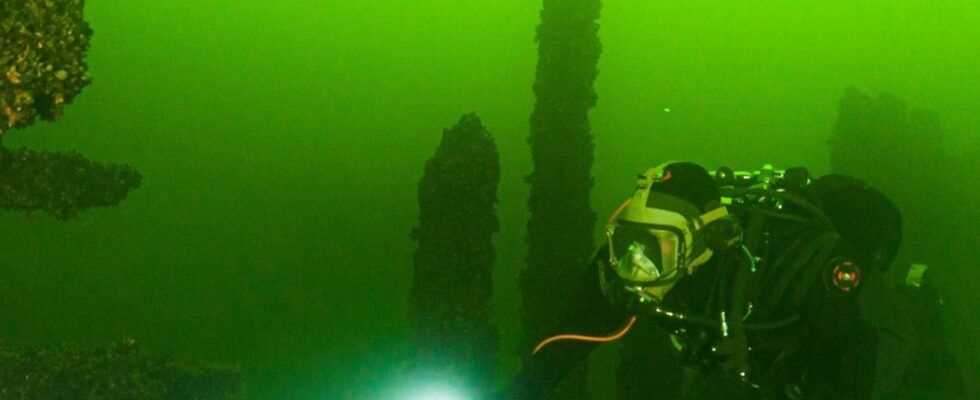Diving in Germany
These spots should have divers on their list
Sunken ships wait for divers in the green waters of the Baltic Sea.
© Erik Saanila / Shutterstock.com
You don’t have to get on the next plane for a diving excursion. There are also exciting spots in Germany – a selection.
Take a mental break underwater or finally experience an adventure again after the Corona crisis thwarted many companies. There are many reasons to dive into the underwater world, because every dive is a new and exciting experience. And it doesn’t always have to be the exotic diving spot on the other end of the world. Divers also get their money’s worth in Germany. There are impressive diving spots within the country’s borders, where even professionals and recreational divers can face new challenges.
Holiday feeling while diving on the Baltic coast
German divers do not necessarily have to get on a plane to see impressive underwater fauna and flora. With its long sandy beaches, the Baltic Sea coast not only offers that holiday feeling. Beginners can also explore the exciting underwater world. There are numerous diving spots along the coast where adventurers can spot sunken planes or wrecks. But there is also a lot to see in the shallower coastal areas, including mussel beds, seagrass meadows, colorful reefs and interesting animals such as sea hares and anglerfish.
Back to the mining era in the Riesenstein quarry and the Nuttlar slate mine
As the name suggests, divers in the Riesenstein quarry go down along a quarry – up to 18 meters deep. The diving spot in Meissen near Dresden has many surprises in store, among other things because the visibility is sometimes only two meters. Accompanied by encounters with pike, eels or crabs along the artificially created reefs, divers travel back to the mining era in the quarry. Various objects lie in the depths.
The Nuttlar slate mine, a flooded plant in the Sauerland on the banks of the Ruhr, is up to 30 meters deep. If you dive there, you will find a lot the same as it was back then: Long corridors, high halls, old machines and even rails can still be seen. In one of the flooded breakouts, the miners’ jackets are still hanging. However, the slate mine is one of the most demanding diving spots in Germany. A valid certification in the field of cave diving is therefore a must.
Dive into the flooded town in the Kreidesee Hemmooor
The Kreidesee Hemmoor is 80 kilometers northwest of Hamburg. The area where a cement factory stands was flooded in the 1980s. Since then, numerous freshwater fish have felt at home in the algae-covered waters. Scuba divers can head to the remains of the factory, including a truck ramp, flooded houses, or concrete bombs. The Kreidesee invites you to linger: In addition to the diving base, there is a campsite and holiday homes there.
Caves and the devil’s table: challenges at Lake Constance
Lake Constance, on the border between Germany, Austria and Switzerland, is more than 60 kilometers long and 14 kilometers wide and offers numerous exciting diving spots. Experienced divers in particular get their money’s worth here. A particularly exciting diving spot on the lake is the Teufelstisch, a rock formation that drops steeply into the depths. But be careful: only experts should venture there, because the spot is considered dangerous. Therefore you need a special permit for a dive at the Teufelstisch. There are also three caves to discover near the spot. Beginners will find easier spots around the lake.
For professionals only: deep diving at Walchensee
The locals call it the Caribbean of Bavaria: The Walchensee captivates with its light blue color. But it’s not just the dreamy surface that invites you to linger, there is also a lot to do below it for divers. The fish-rich lake with a depth of up to 190 meters presents challenges even for experienced divers. Divers should therefore have completed at least one Advanced Open Water or Advanced Scuba diving course; a deep diving course is also recommended.
Interesting places in the lake are the steep walls in the “gallery” and unusual rock formations in the lake. In addition, a VW Beetle is waiting for the divers at the “Hackl” at a depth of around 35 meters. Perhaps a dive in Walchensee is twice as worthwhile: According to legend, it contains a gold treasure from the Second World War. It has never been found (so far).
